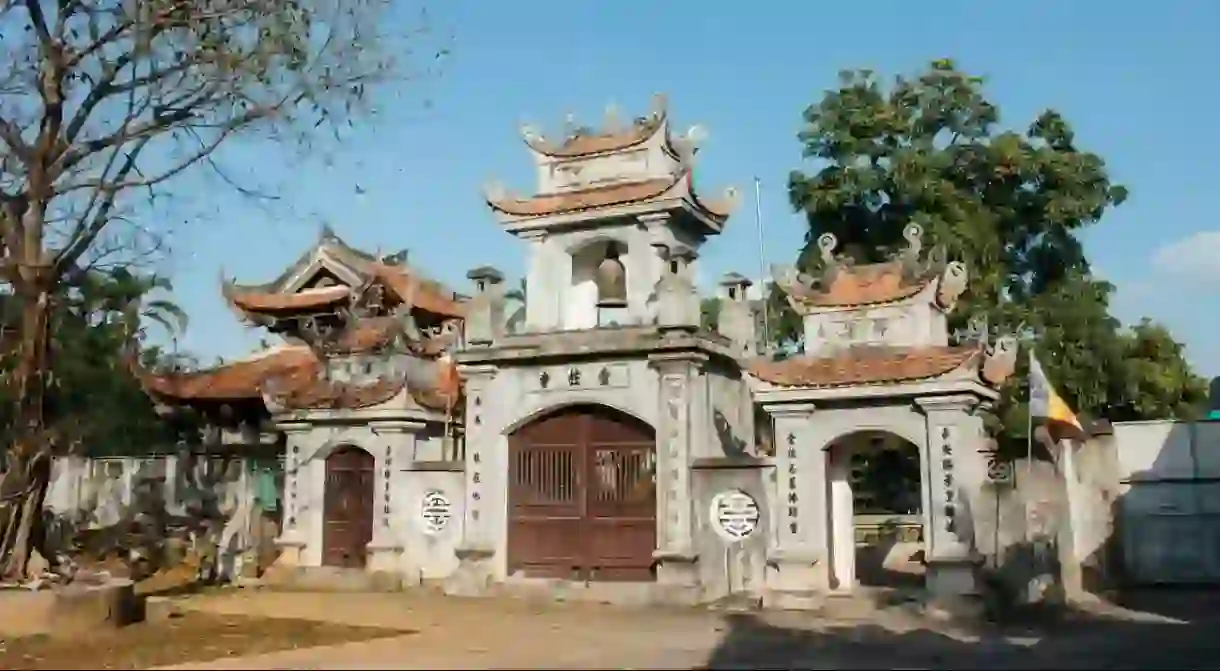A Guide to Vietnam's Hoa Lu Ancient Citadel

This former capital of Vietnam lies 90 km south of Hanoi, protected by high limestone mountains and earthen walls. Hoa Lu is the beautiful ancient city that was the economic and political center of Dai Co Viet, a kingdom that extended from what is now northern Vietnam to the center during the 10th and 11th centuries.

An ancient city
For a county’s capital city, Hoa Lu was a natural geographic choice because of the limestone mountains keeping the city well-hidden from potential invaders. Even today, most of the mountains surrounding Hoa Lu are accessible only to the mountain goats! Northwest of the city is bordered by the Hoang Long River, which also runs through the citadel. It cooled the city in the sticky summer months and provided a convenient waterway for trade and other businesses.


To further fortify the citadel, inhabitants constructed walls around the city using wooden planks and piling earth around them. Historians estimate the walls reached 10-15 meters high and just as many meters thick. Several sections of the wall have been excavated and preserved by archaeologists.


Hoa Lu never had to test its natural defenses – it did not come under attack during the years it served as the capital city. An army from what is now southern Vietnam attempted to invade, but was defeated before they could make their way too far north.


Homage to Emperors
Hoa Lu was founded by Dinh Tien Hoang (previously known as Dinh Bo Linh), the first Emporer of Vietnam. Before he took the throne, there were 12 warlords all competing to reign over the northern kingdom. Dinh defeated his competitors and unified the kingdom under his rule in 968 A.D.


Hoa Lu thrived during the Dinh and following Le dynasties until the founder of the Ly dynasty, Ly Cong Uan, transferred the capital to what is now Hanoi in 1010. Hoa Lu was thus abandoned and succumbed to natural deterioration, leaving few pieces to be unearthed by archaeologists. There are very little authentic remains of Hoa Lu; the citadel was rebuilt in the 17th century, modeled after the original temples and courtyards.


The temples were built to commemorate various Emperors of Hoa Lu and their families. There are several dozen monuments and temples honouring various Vietnamese royals, while around these temples, modern businesses run and modern Vietnamese go about their daily lives.




The legend of Princess Kim
Close to Nhat Tru Pagoda lies a small temple dedicated to Emperor Dinh Tien Hoang’s daughter, Phat Kim. The princess’ hand in marriage was given to one of Dinh Tien Hoang’s favored court officials. When the princess and official were married, they left Hoa Lu to join the southern kingdom of Champa (now south Vietnam).

The princess returned one year later to the fury of her father, who imprisoned her for treason. She was eventually sent to Nhat Tru Pagoda to be a nun and live the rest of her life carrying the pain her departure cast on her family. When Dinh was assassinated in 979, Princess Kim committed suicide by jumping into a well near the pagoda. After her death, the well was dedicated to her.



Truong Yen Festival
In the third month of the Lunar New Year, Hoa Lu holds an impressive festival commemorating its reign from 968-1010 A.D. There is a large procession beginning at Hoang Long river that crosses the citadel and ends at the temples of Dinh Tien Hoang and Le Dai Hanh, the first and last Emperor who reigned ancient Vietnam from Hoa Lu. The festival also includes plays (usually about Dinh Tien Hoang), contests (chess is a favorite), games and a fair.


Hoa Lu is a very convenient stop en route from Hue to Hanoi, but day trips can easily be arranged from Hanoi. A visit to this beautiful piece of Vietnamese history also pairs well with a sight-seeing trek to other scenic places in Ninh Binh province.


You can catch breathtaking views of the ancient capital by hiking up one of the small mountains surrounding the citadel.



Hoa Lu is a beautiful spot to soak in some ancient Vietnamese history and admire the stunning natural scenery surrounding the citadel.













